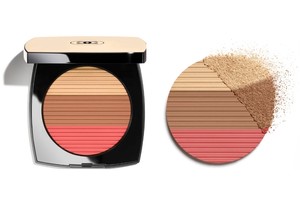Linea Matei’s First Solo Show Is a Tender Triumph
Written by Rosel Jackson Stern by Filippa FinnWhen I walk into Linea Matei’s first soloshow Ser Du Mig, I don’t know what I’m looking at. Humanoid polyester sculptures with rounded edges in varying champagne colours sit in a circle with an empty chair among them. Each sculpture is stuffed with wadding and set up as though I’ve just walked in on an otherworldly AA meeting — alien yet somehow familiar.
It’s opening night on a chilly February evening at the Stockholm based gallery CFHill. The room is buzzing with onlookers gazing at the circle, in turn watched by more textile sculptures lining the walls around us. The sculptures seem to echo the humanity of the onlookers. There’s an affinity to them as if we’re meeting ourselves from a different dimension. On closer inspection, each sculpture possesses a mirror where the face should be.
This confronting intimacy is no accident. Having graduated from Konstack in 2022, this encounter is the first solo show of textile artist Linea Matei. She has sketched each sculpture and crafted them using the sewing skills she gained as a child. The subtle depth of their postures has been hard-won through hours of interviews across Sweden with subjects of varying ages, sensibilities and locations. “I wanted to set up the sculptes so that they explored what might happen if the interviewees somehow met,” she tells me in the upstairs rooms of the gallery. “What would happen if these people from wildly different backgrounds shared space?” she asks. The result is not just a cheap imitation of human behaviour, but a life given, reflected and cared for. Each of the sculptures is someone we know, forgotten or avert our eyes from. They are someone we console, someone whose shoulder we cry on. Both disturbing and comforting, there is a warmth to Linea's show born of mature and nuanced practice.
At the opening, the eerie familiarity seems echoed by my fellow spectators. When I asked one buyer what made them purchase one of them, he smiled and said: “It was something about the [sculptures] confidence and attitude of ‘please take care of me’ that spoke to me. It’s both vulnerable and strong. Like life.“ What has started as an unforgivingly chilly night in Stockholm has blossomed into an unusual display of public tenderness. We meet the sculptures with the sensibility of glimpsing a long-lost friend, only to be confronted by our own faces. For cold and cynical hearts, the show is bright and unassuming mediation on connection. It is confounding, delightful and surprises even the most deadened of viewers into a shared moment of humanity. It’s a benevolence so sweet that it poked my eye upon first seeing the show, equivalent to a stranger picking up on an awkward habit I never thought anyone noticed. Once I’d finished flinching, something inside me melted at the lives lived through these sculptures.
Linea has done what the best art does: transmutes the world around them to reflect something of value back at the viewer. To do so without becoming a cliché, or overly “sugary” as my grandmother would say, you have to be specific. In this case, the angle of an arm, or weight of a knee becomes the difference between being force fed a message and inhaling the sweet scent of your favourite dish as a child. There’s no clearly discernible moral to Ser Du Mig, a credit to the artist. True to its name, it constitutes a wildly successful exploration of what it means to be seen.
Ser Du Mig runs until 15/03/2024 at CFHill Gallery in Stockholm.




























